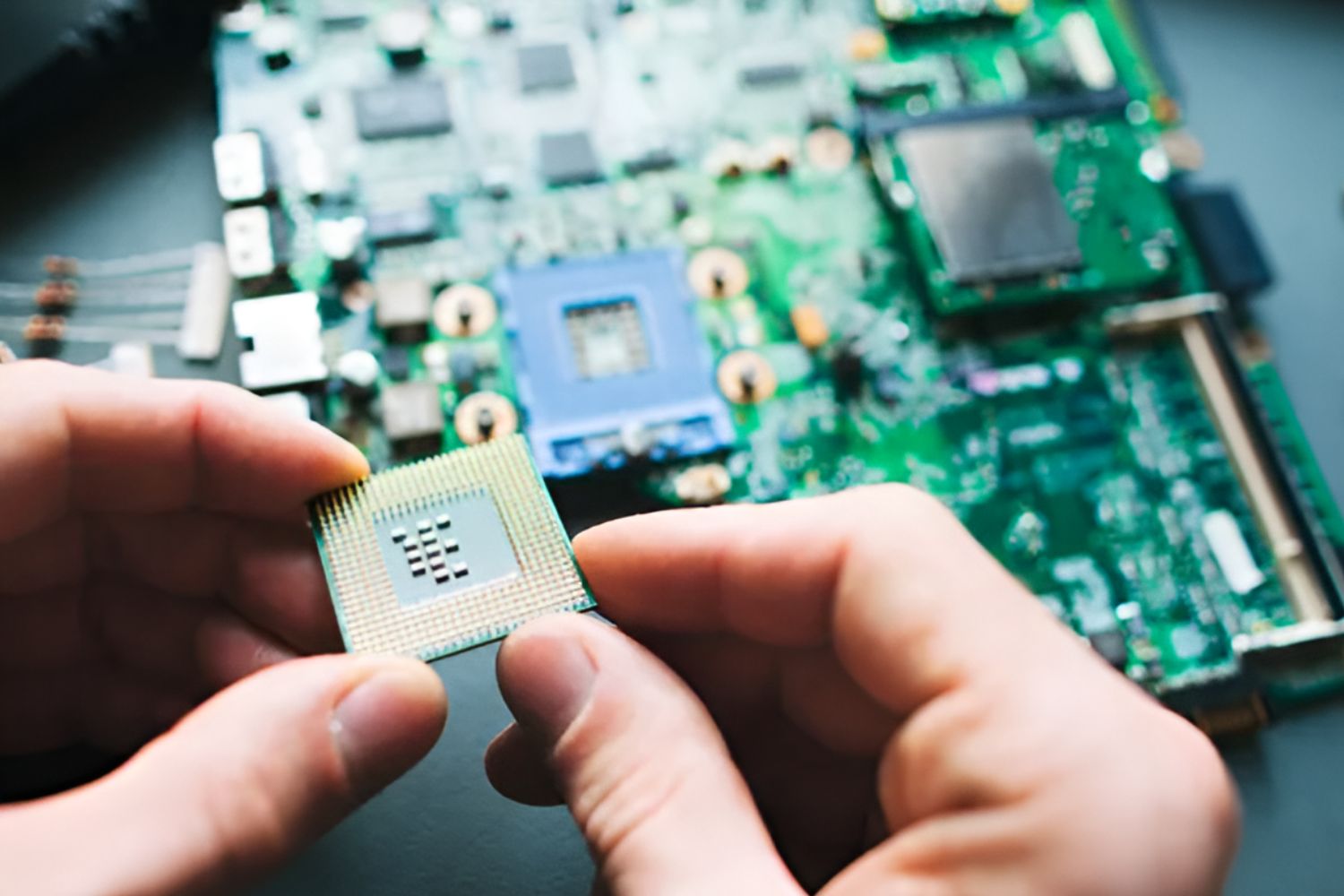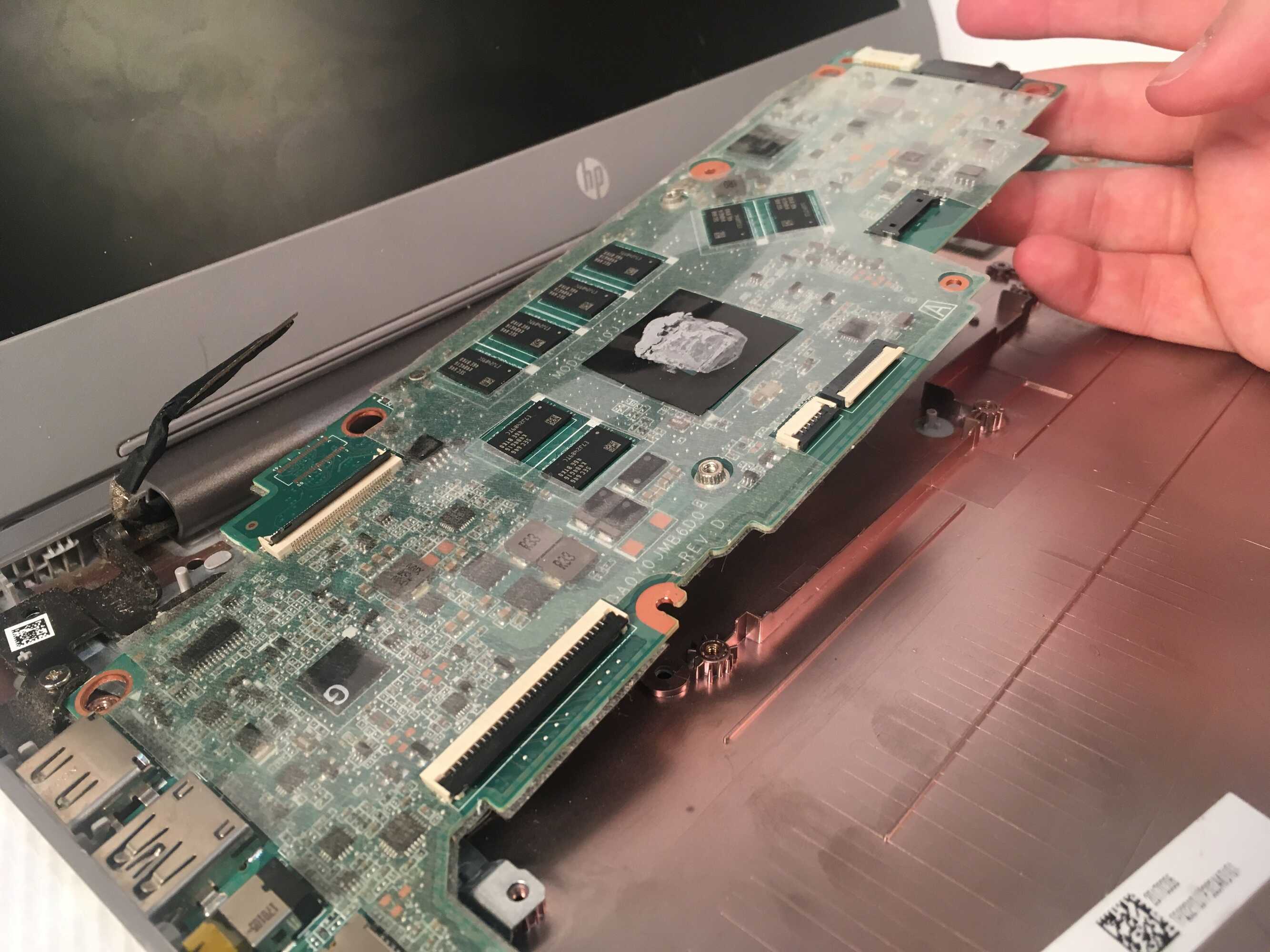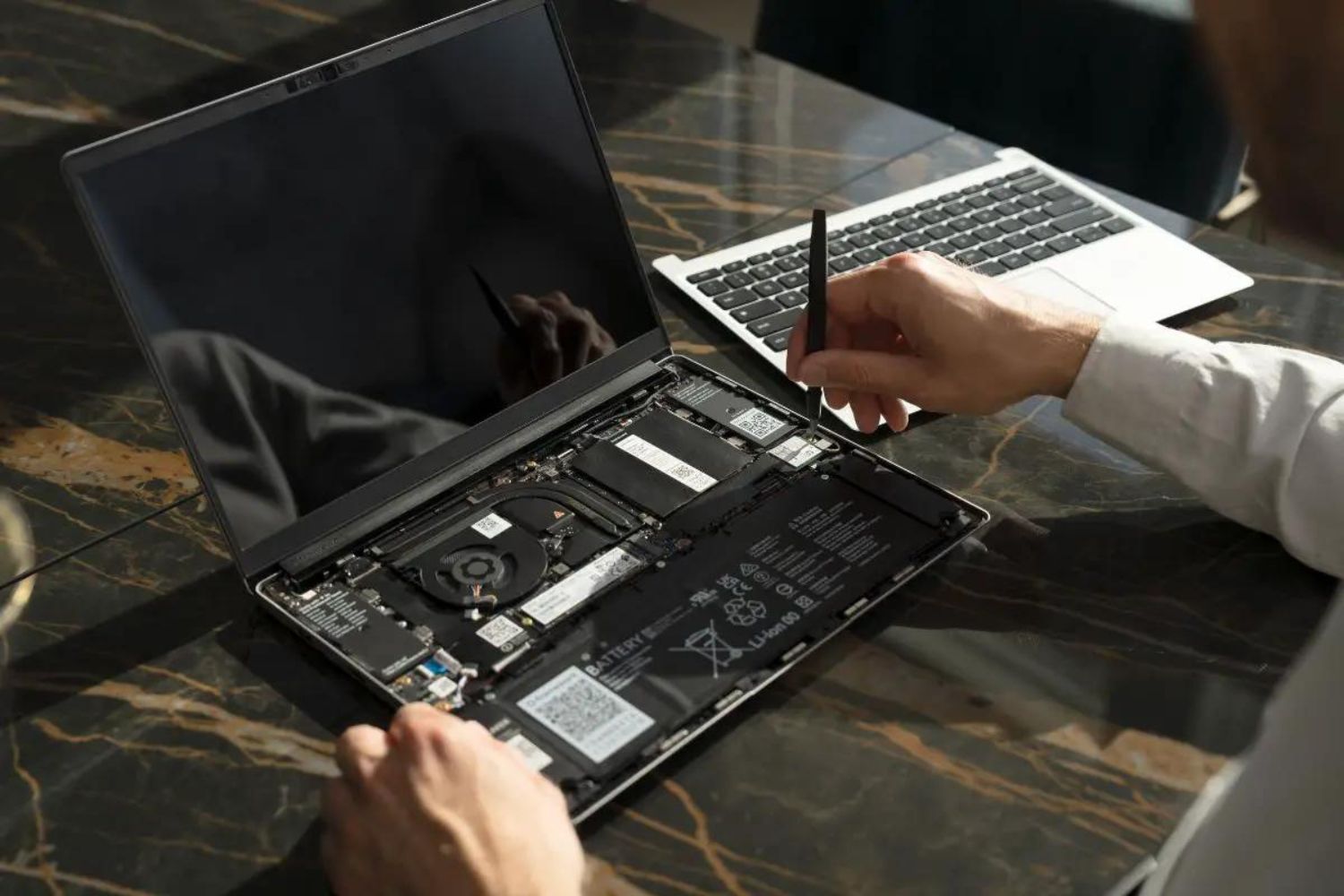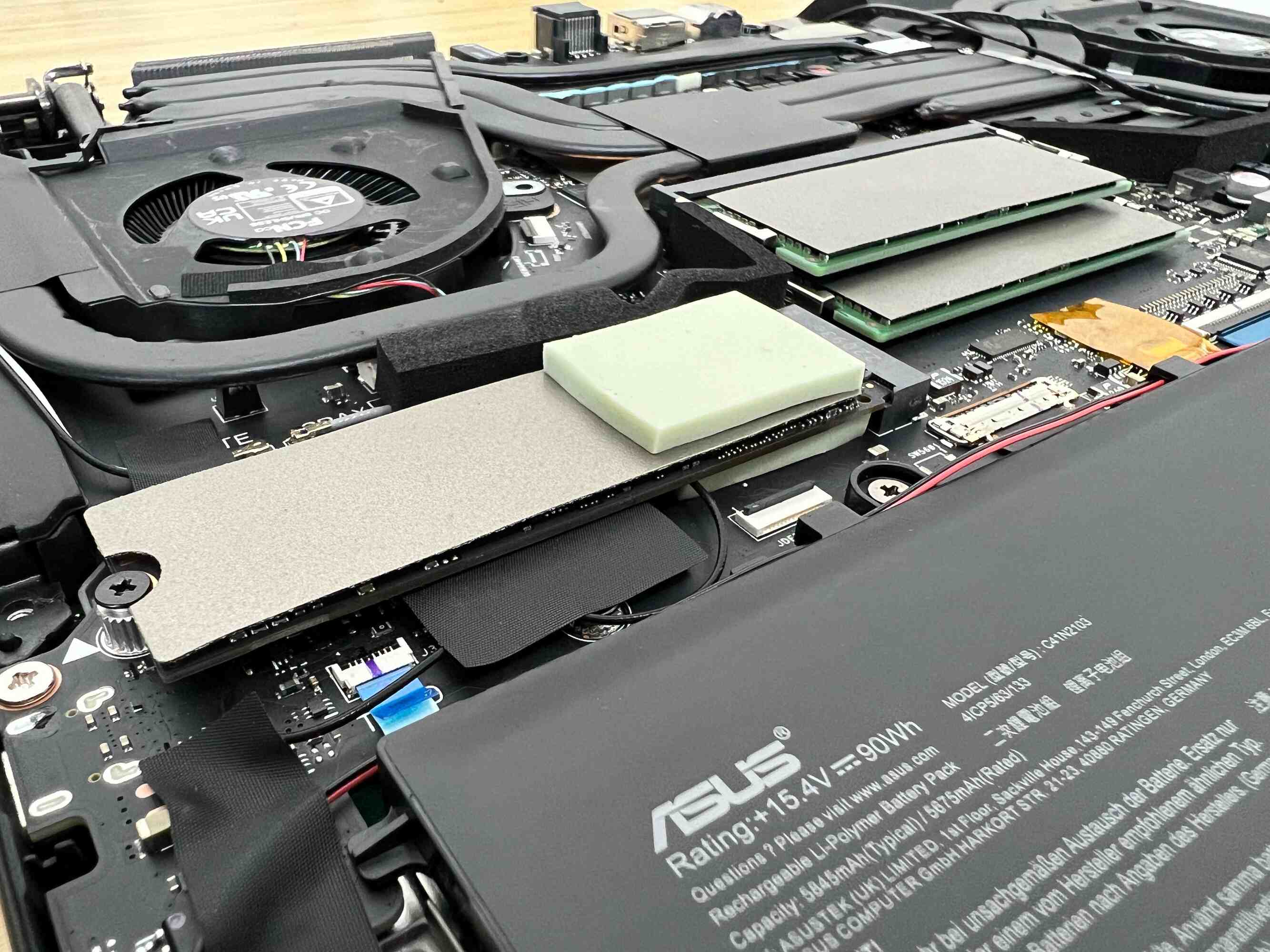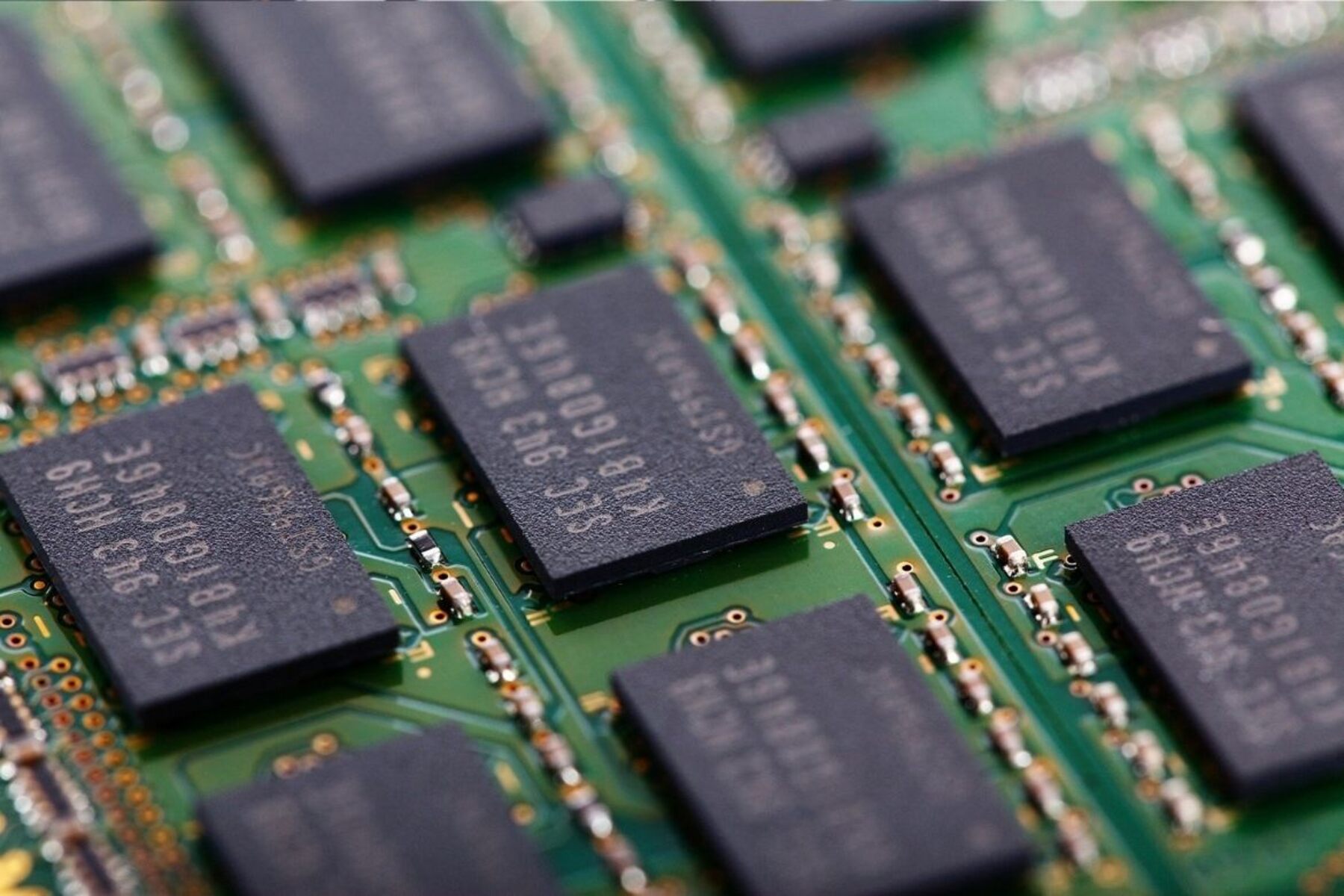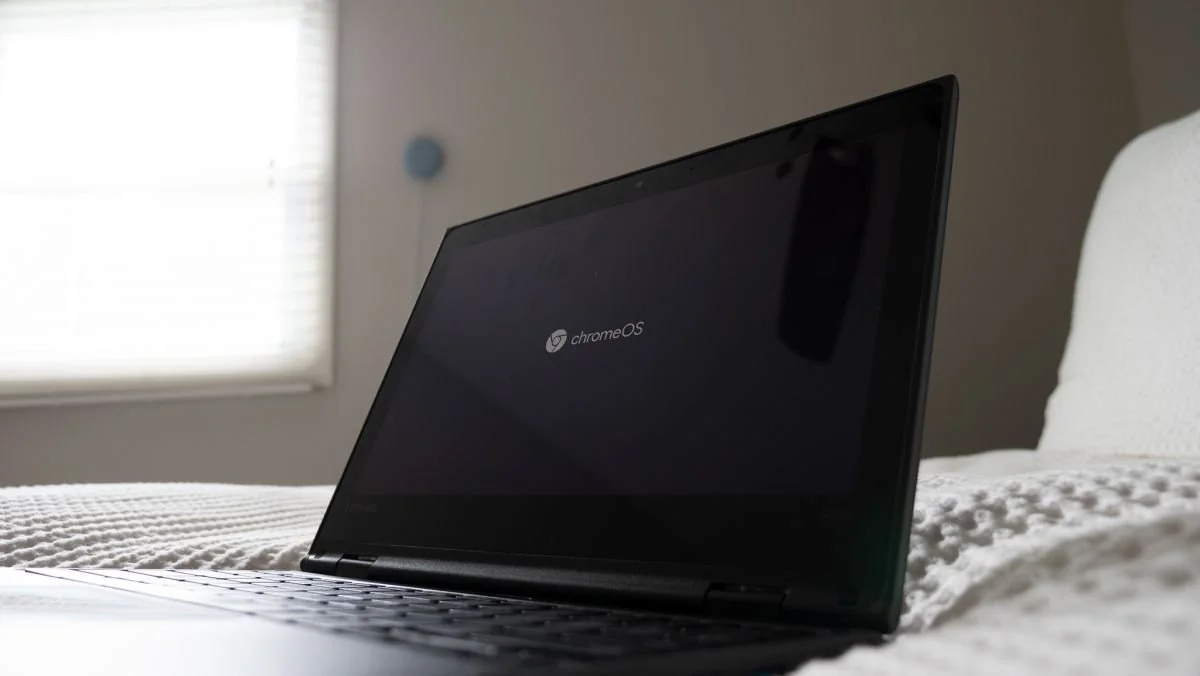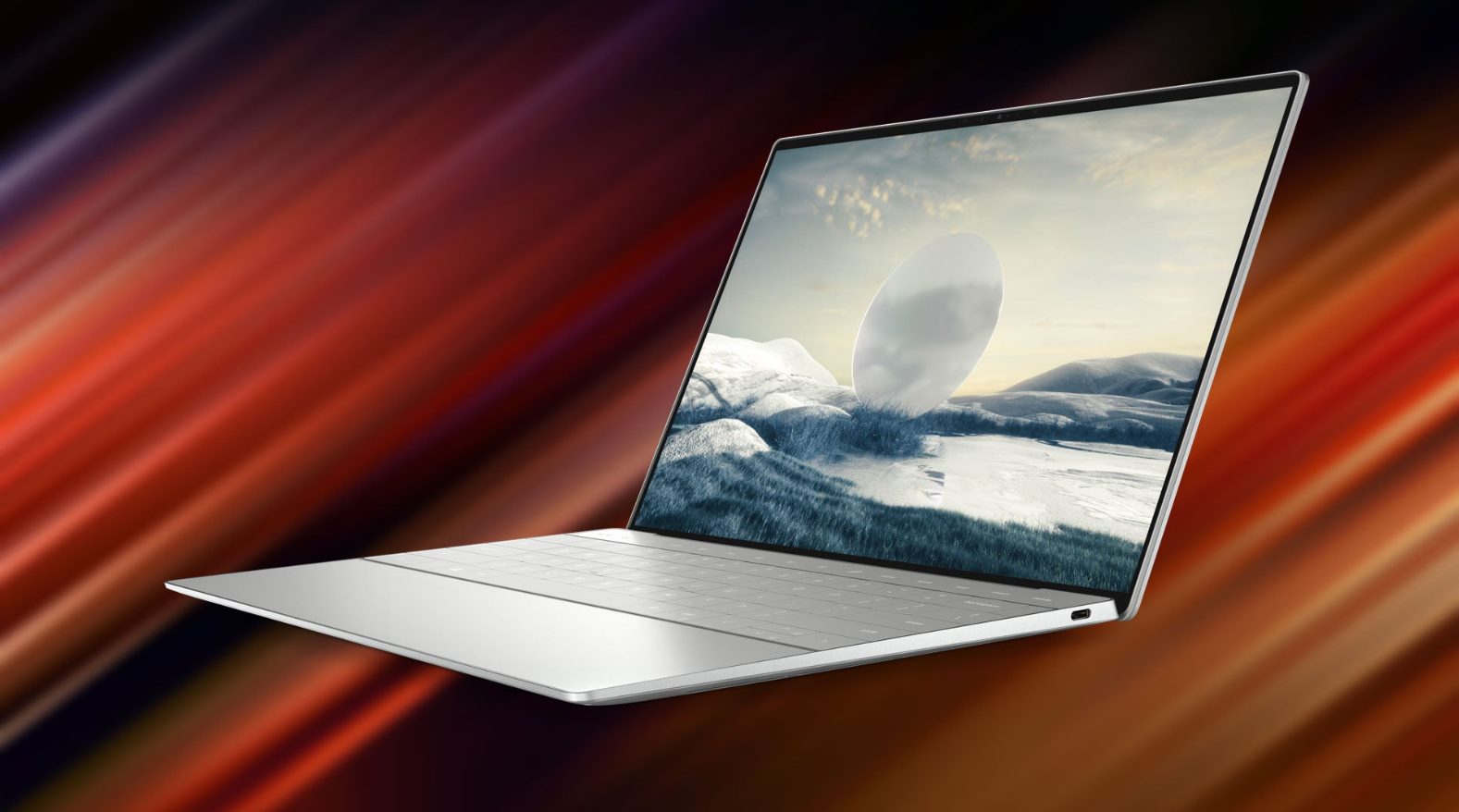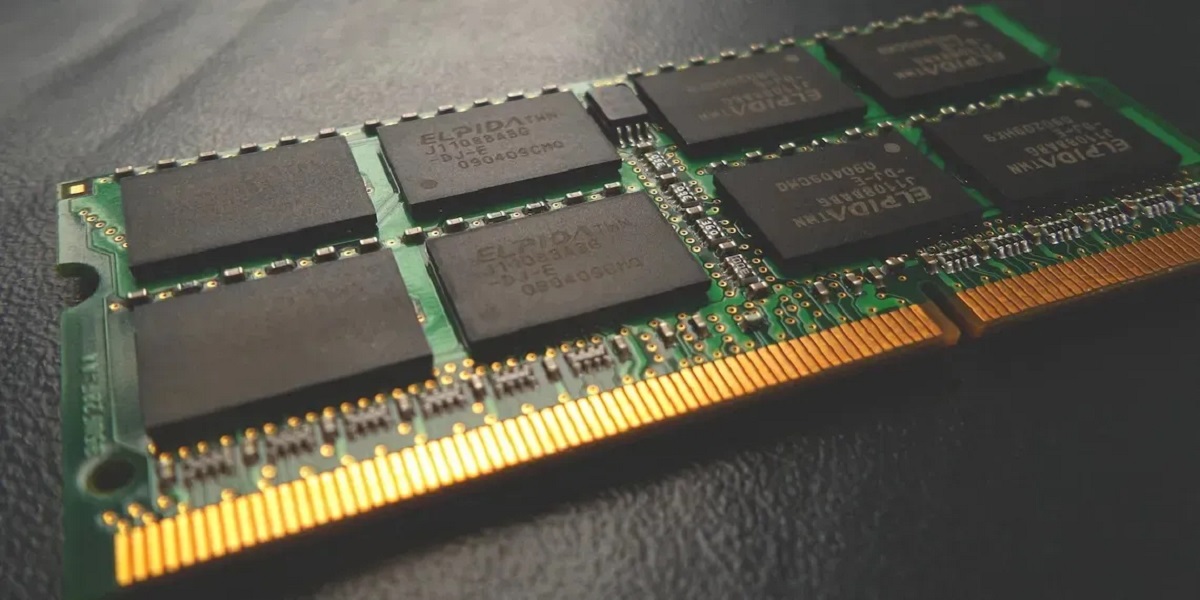Introduction
When it comes to choosing a Chromebook, one of the critical factors to consider is the amount of RAM it has. RAM, or Random Access Memory, plays a crucial role in the performance and multitasking capabilities of any computer, including Chromebooks.
Chromebooks have gained immense popularity in recent years, thanks to their affordability, simplicity, and fast boot times. These lightweight laptops run on Google’s Chrome OS, which is designed to be fast and efficient. However, since most applications and data are stored in the cloud, the amount of RAM in a Chromebook becomes a crucial aspect to ensure smooth performance and seamless multitasking.
RAM is the temporary storage space that your computer uses to store data and applications that are currently in use. It allows for quick access to information, resulting in faster loading times and smoother overall performance. Without sufficient RAM, your Chromebook may struggle to handle multiple applications and browser tabs simultaneously.
In this article, we will explore the importance of RAM in a Chromebook and discuss how much RAM do most Chromebooks have. Additionally, we will address the question of whether 4GB of RAM is enough for a Chromebook, or if more RAM is necessary for certain users.
What is RAM?
RAM, short for Random Access Memory, is a crucial component of any computer system, including Chromebooks. It serves as a temporary storage space for data and applications that are currently in use. Unlike the permanent storage provided by the hard drive or SSD, RAM is fast, volatile memory that allows for quick and temporary access to information.
Think of RAM as the workspace of your computer. It holds the files and applications that you are actively using, providing speedy access to them. When you open a program or a browser tab, it is loaded into RAM for quick retrieval. This allows for faster multitasking and smoother performance, as the data can be accessed more quickly compared to retrieving it from the slower storage drives.
RAM is measured in gigabytes (GB), and the more RAM your system has, the better it can handle resource-intensive tasks. When you run multiple applications or open numerous browser tabs, the available RAM is divided among them. If you have limited RAM, your system may struggle to keep up, resulting in lagging performance, slower loading times, and possible crashes.
It’s important to note that RAM is different from permanent storage space, such as the hard drive or SSD. RAM is volatile memory, meaning it does not retain data when the computer is turned off or restarted. Once you shut down your Chromebook, the data stored in RAM is lost. This is why it’s essential to save your work, documents, and files to a permanent storage location, such as the cloud or your Chromebook’s internal storage.
Overall, RAM plays a critical role in the performance of your Chromebook. It allows for seamless multitasking, fast loading times, and smooth operation of applications and browser tabs. Choosing a Chromebook with sufficient RAM is essential to ensure optimal performance and a smooth user experience.
Why does RAM matter in a Chromebook?
RAM is a crucial hardware component that significantly impacts the performance and functionality of a Chromebook. The amount of RAM in a Chromebook determines how efficiently it can handle multiple tasks, applications, and browser tabs simultaneously. Here are a few key reasons why RAM matters in a Chromebook:
1. Multitasking: Chromebooks are known for their multitasking capabilities. With a sufficient amount of RAM, you can smoothly switch between various applications, open multiple browser tabs, and run resource-intensive tasks without experiencing lag or slowdowns. RAM allows your Chromebook to store and access data quickly, ensuring that you can work efficiently and effortlessly. Insufficient RAM can result in slow performance, freezing, and delays when juggling multiple tasks.
2. Web Browsing: Chromebooks revolve around browsing the web. With Chrome OS being primarily web-based, users often have several tabs open simultaneously for work, research, entertainment, and more. Each tab consumes memory, and the more tabs you have open, the more RAM is required. Sufficient RAM ensures that web pages load quickly and smoothly, allowing you to browse without interruptions or slowdowns.
3. App Performance: Chromebooks can run Android apps and Linux applications in addition to web-based applications. These apps can be resource-intensive, and having ample RAM ensures that they run smoothly and without any performance issues. Whether you’re working with photo editing software, playing games, or using productivity apps, having sufficient RAM is crucial for optimal app performance.
4. Future-Proofing: As technology advances, the demands placed on computers increase. Software updates and newer versions of applications often require more system resources. By investing in a Chromebook with a higher amount of RAM, you future-proof your device, ensuring that it can handle the evolving demands of modern computing for a longer period. With more RAM, your Chromebook will be able to handle upcoming software updates and new applications without compromising on performance.
In essence, RAM is a critical component in a Chromebook that directly impacts its multitasking capabilities, web browsing experience, app performance, and future-proofing. By choosing a Chromebook with sufficient RAM, you can ensure that your device operates smoothly, allowing you to seamlessly multitask, browse the web, and run various applications without slowdowns or performance issues.
How much RAM do most Chromebooks have?
When it comes to the amount of RAM in a Chromebook, there is a wide range of options available in the market. The amount of RAM can vary depending on the specific model, the intended use, and the budget. However, most Chromebooks typically come with either 4GB or 8GB of RAM.
4GB of RAM: Many entry-level and budget-friendly Chromebook models are equipped with 4GB of RAM. This amount of RAM is sufficient for basic tasks like web browsing, email, document editing, and streaming media. It can handle a moderate number of browser tabs and relatively simple applications without significant performance issues.
8GB of RAM: As you move up the price range and consider mid-range or higher-end Chromebooks, you’ll find models that offer 8GB of RAM. This amount of RAM provides a significant boost in multitasking capabilities and performance. With 8GB of RAM, you can comfortably run several applications simultaneously, have multiple browser tabs open, and handle more resource-intensive tasks without noticeable slowdowns.
It’s worth noting that 4GB and 8GB are the most common RAM configurations for Chromebooks, but there are exceptions. Some high-end Chromebook models designed for power users and professionals may offer even higher amounts of RAM, such as 16GB or even 32GB. However, these are less common and generally reserved for niche use cases that require exceptionally demanding applications.
When considering the amount of RAM for your Chromebook, it’s essential to evaluate your specific needs and usage patterns. If you primarily use your Chromebook for basic tasks and don’t require extensive multitasking or resource-intensive applications, 4GB of RAM may be sufficient for your needs. However, if you often find yourself juggling multiple tasks, running several applications simultaneously, or using more demanding software, opting for a Chromebook with 8GB of RAM would be a wise choice to ensure optimal performance.
Ultimately, the amount of RAM you choose for your Chromebook should align with your workflow and the level of performance you require. Balancing your needs and budget will help you make an informed decision when selecting a Chromebook with the appropriate amount of RAM for your tasks and usage patterns.
Is 4GB of RAM enough for a Chromebook?
One of the common questions when it comes to Chromebooks is whether 4GB of RAM is sufficient for optimal performance. The answer to this question depends on your specific needs and usage patterns.
For basic tasks such as web browsing, email, document editing, and streaming media, 4GB of RAM is generally enough. It can handle these tasks smoothly, allowing you to browse the web, open multiple tabs, and work on documents without major performance issues.
However, if you tend to multitask heavily or use more demanding applications, you may experience some limitations with 4GB of RAM. Running several resource-intensive applications simultaneously or having numerous browser tabs open could result in slower performance and occasional lag. This can be especially noticeable if you often work with large files, edit videos, or engage in more complex tasks that require additional system resources.
Keep in mind that Chrome OS itself is designed to be lightweight and efficient, utilizing minimal system resources. This means that Chromebooks with 4GB of RAM can still deliver a satisfactory user experience for many users. Plus, the Chrome operating system’s emphasis on cloud storage and web-based applications helps alleviate some of the resource requirements typically associated with traditional desktop operating systems.
If you find that your workflow demands heavier multitasking, frequently run resource-intensive applications, or work with large files, you may want to consider opting for a Chromebook with 8GB of RAM. The additional RAM provides more headroom for multitasking, smoother performance, and the ability to handle more demanding tasks without experiencing performance degradation.
Ultimately, the decision to go with 4GB or 8GB of RAM depends on your specific needs and budget. If you primarily engage in basic tasks and have budget constraints, a Chromebook with 4GB of RAM can still provide a satisfactory experience. However, if you require more power and performance for multitasking or running resource-intensive applications, investing in a Chromebook with 8GB of RAM would be a more suitable option.
It’s worth noting that while RAM is an essential factor for performance, it’s not the only one. Other hardware components, such as the processor and storage type, also contribute to the overall performance of a Chromebook. Thus, it’s essential to consider the overall specifications and your specific requirements when making a buying decision.
Are there Chromebooks with more than 4GB of RAM?
Yes, there are Chromebooks available in the market that offer more than 4GB of RAM. As the demand for Chromebooks with increased performance and multitasking capabilities grows, manufacturers have started producing models with higher RAM configurations to meet user needs. These Chromebooks typically come with 8GB of RAM, and in some cases, even higher amounts.
Chromebooks with 8GB of RAM have become more prevalent in recent years, particularly in the mid-range to high-end segment. Having 8GB of RAM provides a significant boost in performance and multitasking capabilities. It allows users to run multiple applications simultaneously, handle more browser tabs without performance degradation, and work on resource-intensive tasks with smoother operation.
Moreover, some manufacturers offer Chromebooks with even higher amounts of RAM, such as 16GB or 32GB. These models are often targeted towards professionals, power users, or those who require the extra horsepower to handle demanding tasks, such as video editing, graphic design, or running virtual machines.
While Chromebooks with more than 4GB of RAM offer enhanced performance and flexibility, it’s important to note that they are often priced higher than their 4GB counterparts. The higher RAM configurations cater to specific user needs and typically come with other advanced features and specifications to justify the higher price point.
It’s worth considering your specific requirements and budget to determine whether a Chromebook with more than 4GB of RAM is necessary for your use case. If you frequently engage in resource-intensive tasks, advanced multitasking, or require a future-proof device, a Chromebook with 8GB or higher RAM can be a worthwhile investment.
Ultimately, the availability of Chromebooks with more than 4GB of RAM provides users with the flexibility to choose a device that meets their performance needs. Whether it’s for professional work, heavy multitasking, or running demanding applications, these higher RAM configurations offer improved performance and the ability to tackle more resource-intensive tasks with ease.
Do you really need more than 4GB of RAM in a Chromebook?
Whether you need more than 4GB of RAM in a Chromebook depends on your specific usage patterns and requirements. For many users, 4GB of RAM is sufficient to handle everyday tasks and provide a smooth user experience. However, there are certain scenarios where having more RAM can be beneficial.
If you engage in heavy multitasking, running multiple applications simultaneously, or using resource-intensive software, opting for a Chromebook with more than 4GB of RAM can significantly enhance performance. The additional RAM allows for smoother multitasking and ensures that your Chromebook can handle more demanding tasks without slowdowns or performance degradation.
Similarly, if you frequently work with large files, such as editing videos or working on graphics-intensive projects, having more RAM can improve the processing speed and overall performance of your Chromebook. It provides the system with additional memory to handle the data and operations associated with these resource-intensive tasks.
Furthermore, if you plan to use your Chromebook for professional purposes or require a future-proof device that can handle evolving software requirements, opting for a Chromebook with more RAM can be a wise investment. Having more RAM ensures that your device remains capable of handling the demands of newer applications, software updates, and technological advancements for a longer duration.
On the other hand, if your usage primarily revolves around basic tasks like web browsing, email, document editing, and media streaming, 4GB of RAM is likely to be sufficient for your needs. Chromebooks are designed to be lightweight and efficient, and Chrome OS itself is optimized to work well with lower amounts of RAM.
Ultimately, the decision to invest in a Chromebook with more than 4GB of RAM depends on your specific requirements and budget. It’s important to evaluate your typical usage scenarios, the intensity of the tasks you perform, and how future-proof you want your device to be. If you believe that you will benefit from the additional multitasking capabilities, improved performance, and enhanced future compatibility, then opting for a Chromebook with more RAM is worth considering.
Before making a decision, it’s also essential to consider other aspects such as the processor, storage capacity, and overall specifications of the Chromebook, as RAM is just one component that contributes to the device’s performance and functionality.
Conclusion
RAM plays a vital role in the performance and multitasking capabilities of a Chromebook. While most Chromebooks come with either 4GB or 8GB of RAM, the ideal amount depends on your specific needs and usage patterns.
If you primarily engage in basic tasks like web browsing, email, and document editing, 4GB of RAM is generally sufficient to provide a smooth user experience. It can handle these tasks without major performance issues and provides a budget-friendly option.
However, if you require heavier multitasking, frequently run resource-intensive applications, or work with large files, opting for a Chromebook with 8GB or more of RAM is recommended. The additional RAM allows for smoother multitasking, better performance, and the ability to handle more demanding tasks without noticeable slowdowns.
It’s important to consider your specific workflow and budget when choosing the amount of RAM for your Chromebook. Additionally, factors such as the processor, storage type, and overall specifications of the device should also be taken into account as they contribute to the overall performance of the Chromebook.
Ultimately, striking a balance between your needs and budget will help you choose a Chromebook with the appropriate amount of RAM for your tasks. Whether you opt for 4GB or 8GB of RAM, both options can provide a satisfactory experience, but selecting the right amount will ensure optimal performance, smooth multitasking, and enhanced usability for your Chromebook.







